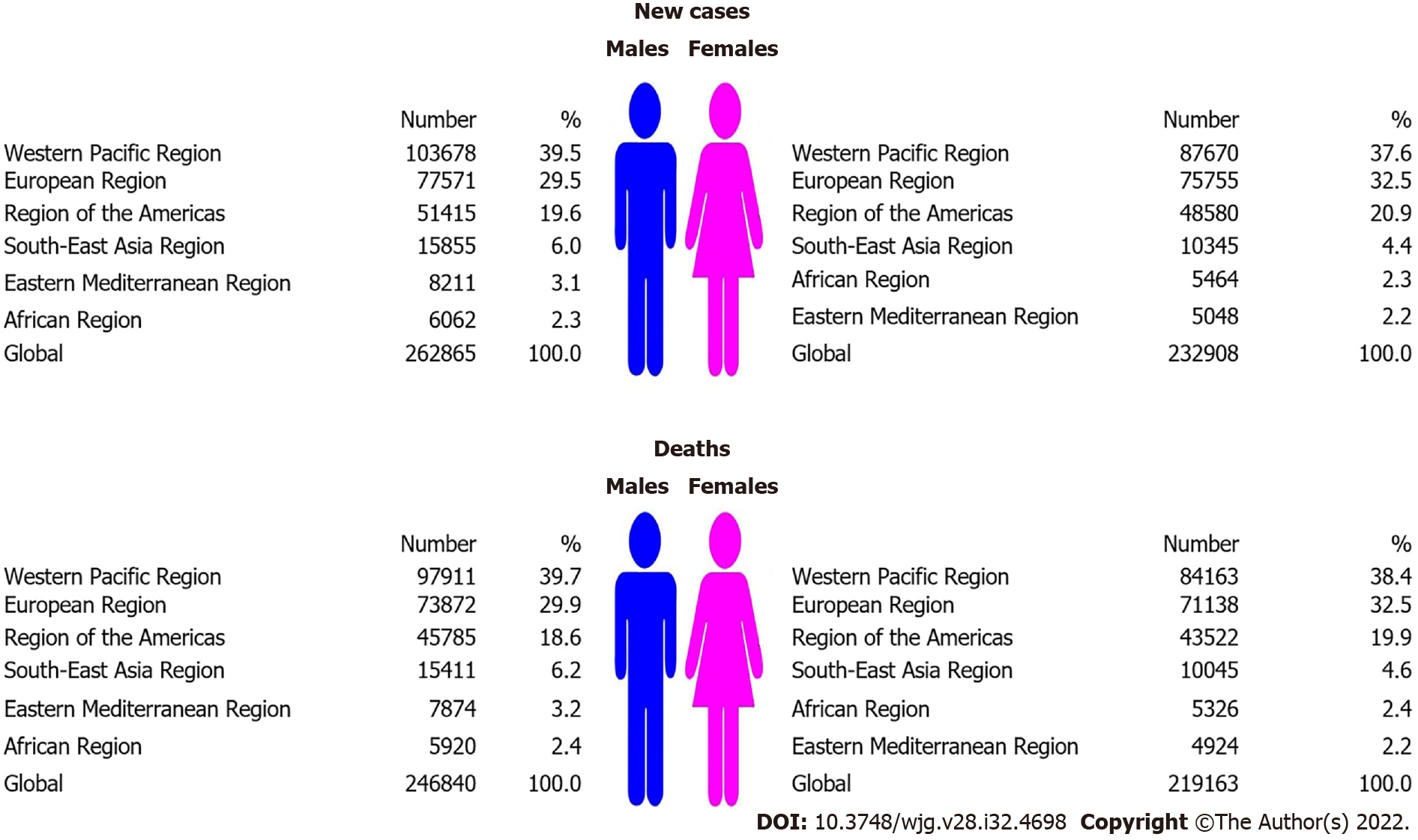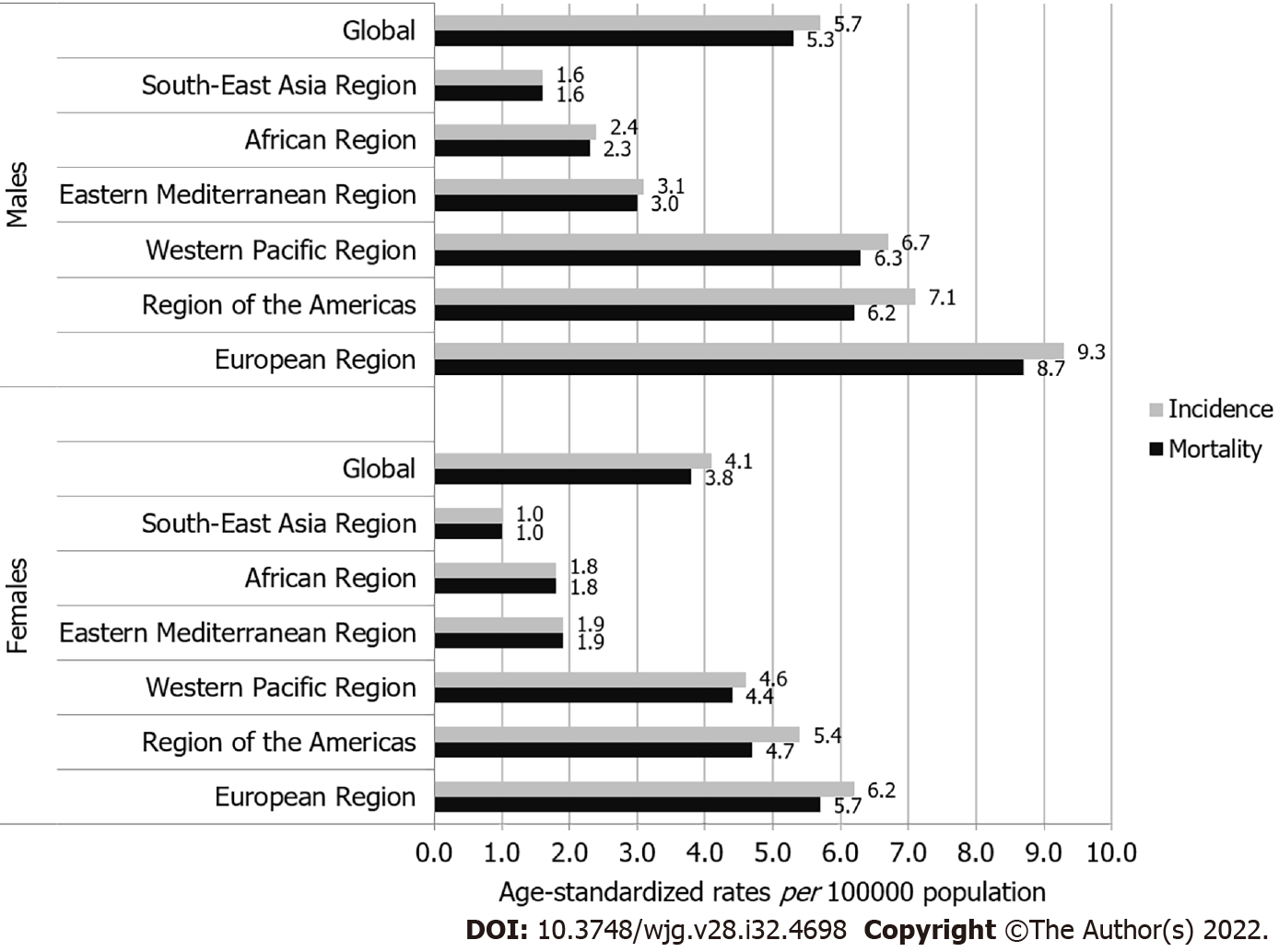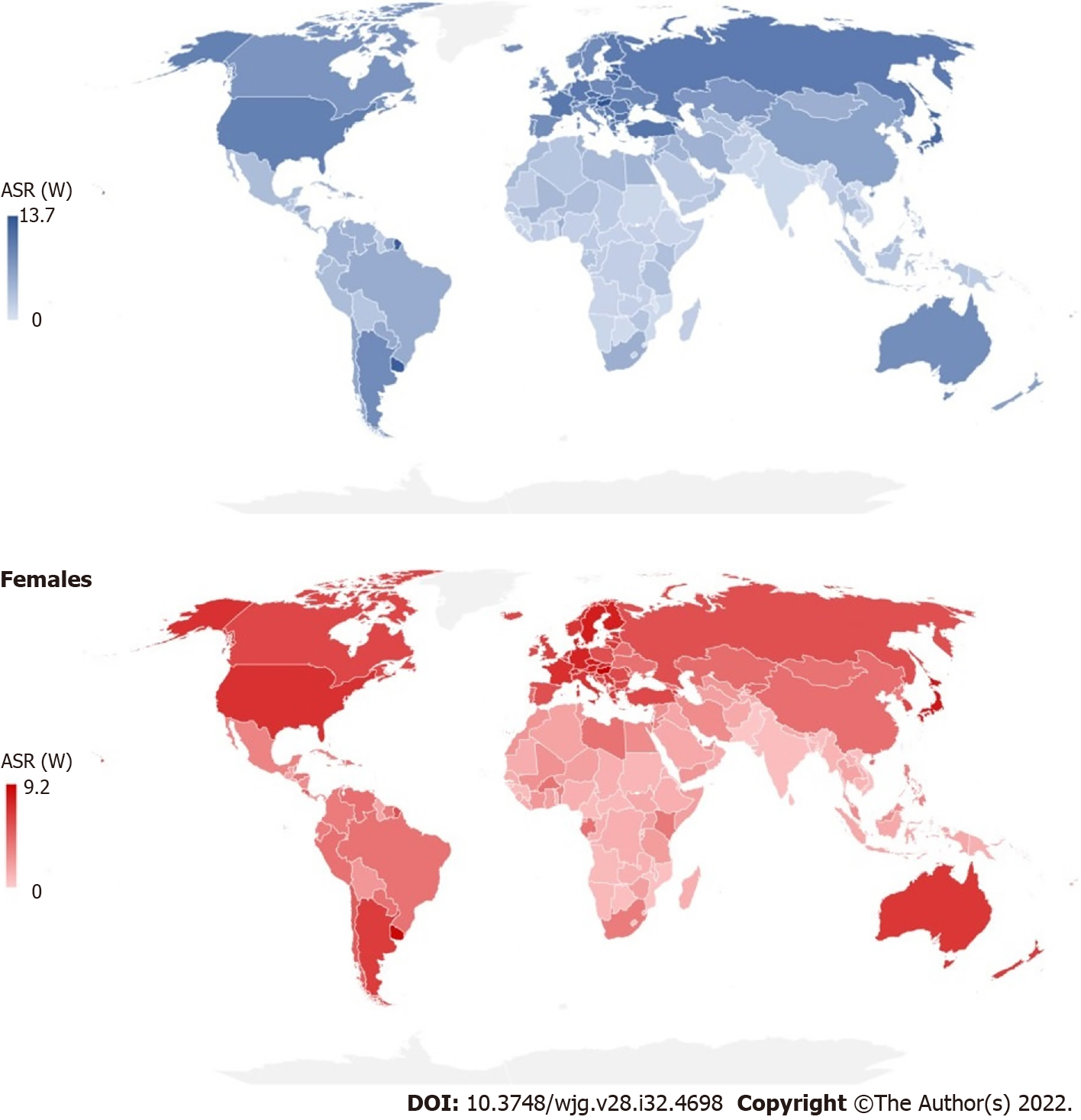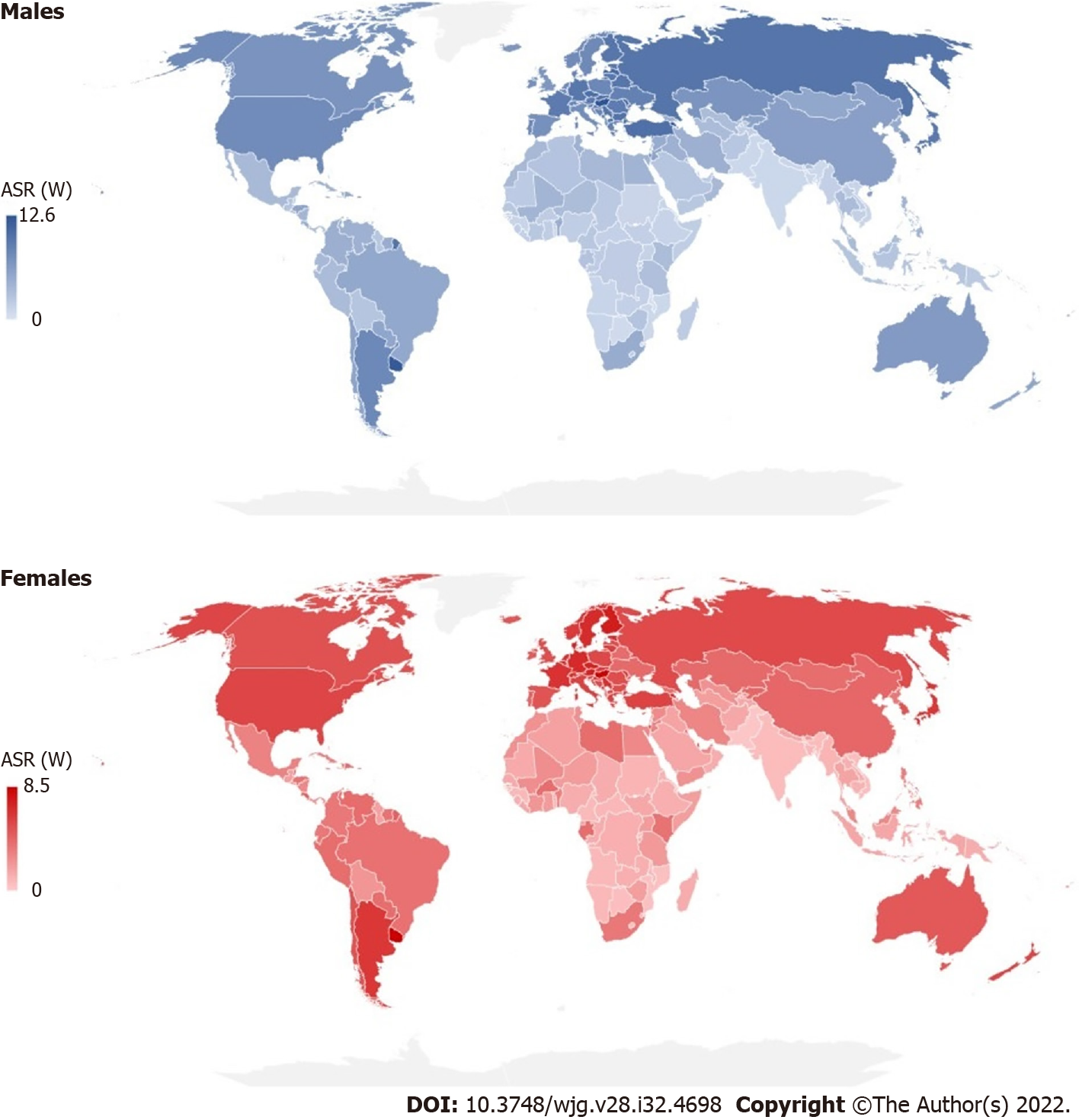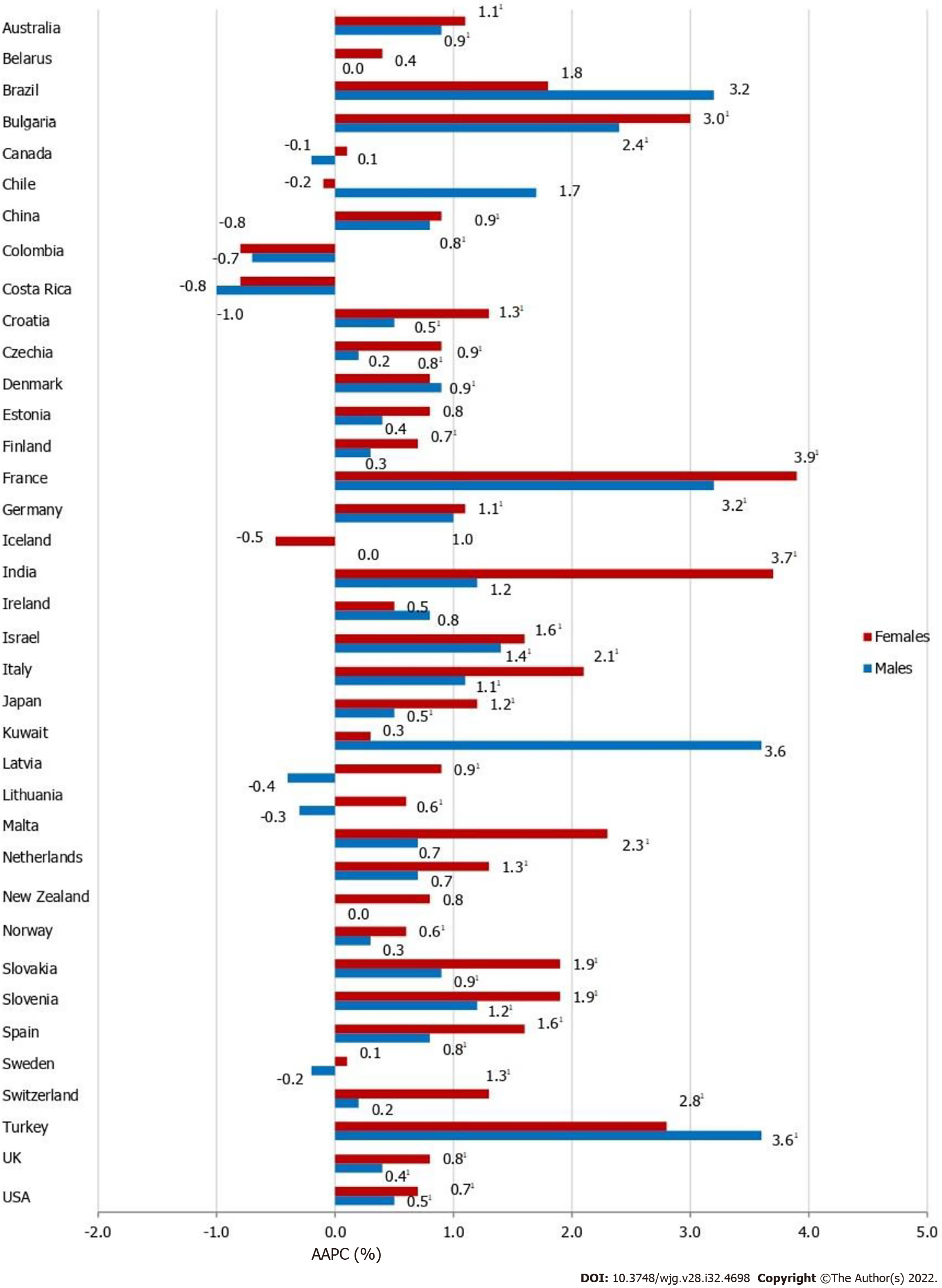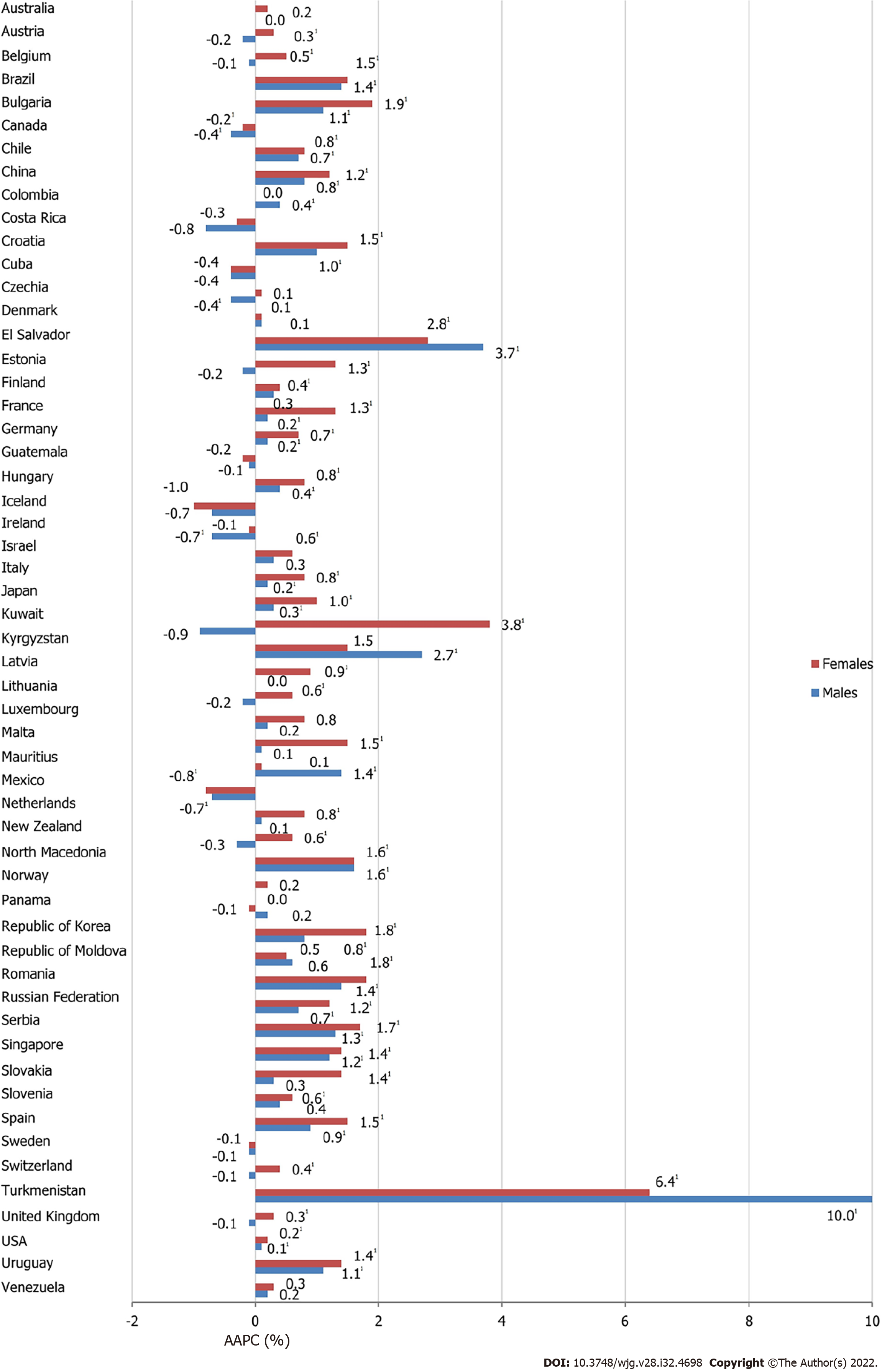Copyright
©The Author(s) 2022.
World J Gastroenterol. Aug 28, 2022; 28(32): 4698-4715
Published online Aug 28, 2022. doi: 10.3748/wjg.v28.i32.4698
Published online Aug 28, 2022. doi: 10.3748/wjg.v28.i32.4698
Figure 1 Number of new cases and deaths of pancreatic cancer, by World Health Organization regions and sex, 2020.
Figure 2 Incidence and mortality of pancreatic cancer (global and by World Health Organization regions), by sex, 2020.
Figure 3 Estimated age-standardized incidence rates of pancreatic cancer in 2020.
ASR (W): Age-standardized rate (using World standard population, per 100000).
Figure 4 Estimated age-standardized mortality rates of pancreatic cancer in 2020.
ASR (W): Age-standardized rate (using World standard population, per 100000).
Figure 5 Pancreatic cancer incidence trends, by country and sex: a joinpoint analysis.
1Statistically significant trend (P < 0.05). Joinpoint results are not shown for incidence in some countries, because there were no data for pancreatic cancer in the whole observed period continuously. For the trend analysis, we presented all incidence data available from 1991 onwards, provided that there were data for at least 15 years in a row continuously. AAPC: Average annual percent change.
Figure 6 Pancreatic cancer mortality trends, by country and sex: a joinpoint analysis.
1Statistically significant trend (P < 0.05). Joinpoint results are not shown for mortality in some countries, because there were no data for pancreatic cancer in the whole observed period continuously. For the trend analysis, we presented all mortality data available from 1991 onwards, provided that there were data for at least 15 years in a row continuously. AAPC: Average annual percent change.
- Citation: Ilic I, Ilic M. International patterns in incidence and mortality trends of pancreatic cancer in the last three decades: A joinpoint regression analysis. World J Gastroenterol 2022; 28(32): 4698-4715
- URL: https://www.wjgnet.com/1007-9327/full/v28/i32/4698.htm
- DOI: https://dx.doi.org/10.3748/wjg.v28.i32.4698









